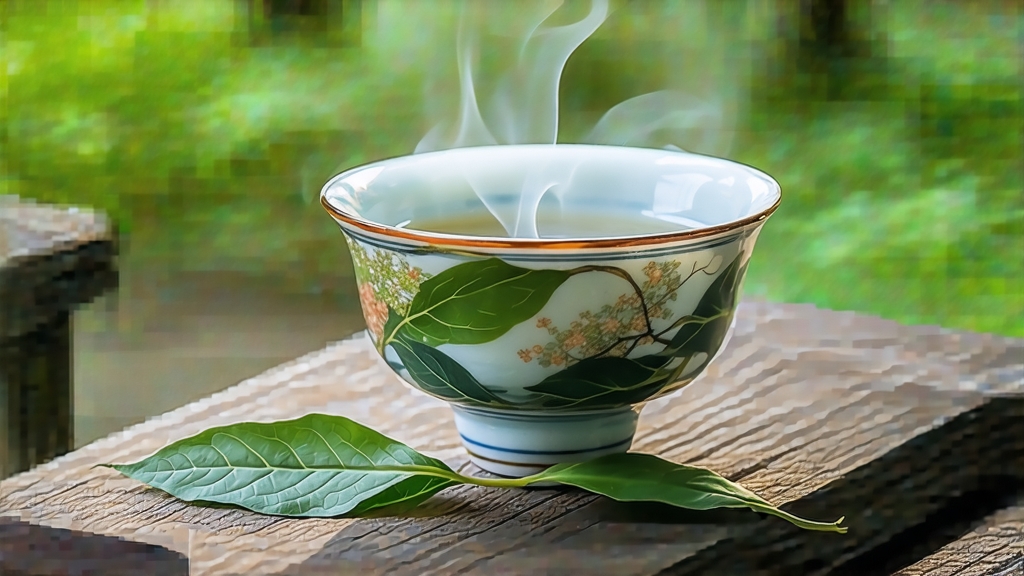
Rising like a jade island from the Tropic of Cancer, Taiwan’s Alishan range traps monsoon clouds between 1,000 and 1,400 m above sea level. Those drifting veils act as a natural shade-cloth, slowing leaf growth and coaxing the bush into stockpiling amino acids, geraniol and methyl jasmonate. The result is Alishan High-Mountain Oolong, a cultivar that has become the aromatic signature of Taiwan’s central mountains and a benchmark for the island’s entire high-mountain category.
History
Although Qing-era settlers carried tea seedlings from Fujian’s Wuyi cliffs to Taiwan during the 18th century, Alishan itself remained a forest reserve until the Japanese colonial government opened the Alishan Forest Railway in 1912. Japanese agronomists introduced the Qingxin (Green Heart) cultivar in the 1920s, selecting it for cold tolerance and floral precocity. After 1949, Kuomintang veterans refined the partial-oxidation technique learned from Anxi masters, adapting it to the cooler nights of the high peaks. By the 1980s, when Taiwan’s economy lifted domestic demand for fine tea, Alishan farmers had perfected the tight ball-rolling method that preserves alpine aromatics during the long descent to lowland markets. Today, the name “Alishan” is protected by Taiwan’s Geographical Indication ordinance; only leaves plucked within the townships of Meishan, Zhuqi, Fanlu and Alishan itself may bear the label.
Cultivar & Terroir
Almost all authentic Alishan oolong is made from Camellia sinensis var. sinensis cv. Qingxin, a shy-bearing bush whose small, serrated leaves resemble a green heart when viewed against the light. The diurnal swing in the mountains can exceed 15 °C; morning mist blocks ultraviolet light, lengthening the tender shoot’s life cycle and thickening cell walls. Volatile compounds concentrate, while tannins remain gentle, giving the liquor a creamy body seldom found in lower-grown teas. Granitic soils, high in potassium yet low in nitrogen, further restrict leaf size, yielding a higher bud-to-leaf ratio prized for fragrance.
Plucking Standard
Farmers wait for the “small open” stage—when the apical bud stands flanked by two semi-mature leaves, still pubescent on the underside. Picking begins at dawn, before the sun burns off dew, and must finish by 10 a.m.; any later and the rising temperature activates enzymes that flatten mountain freshness. A skilled picker can harvest barely 4 kg of raw leaf in a morning, enough for just 1 kg of finished tea after the long craft chain.
Crafting the Clouds: Eight Stages
- Solar Withering: Leaves are spread on bamboo trays under filtered sunlight for 10–20 min. The goal is to shed surface moisture without bruising cells, preserving the jade-green center.
- Indoor Withering: Trays rest on racks in a climate-controlled room (22 °C, 65 % RH) for 6–10 h, with gentle tumbling every hour. A faint grassy note fades as aldehydes convert into floral lactones.
- Bruising & Shaking: In bamboo cylinders, leaves are tossed for 5–8 cycles. Micro-fractures trigger oxidation at the edges while the midrib stays green—the hallmark of “green heart, red edge” prized in Taiwan.
- Oxidation Fix: At 30 % oxidation, a 280 °C drum roast halts enzymatic activity within 90 s, locking in a bouquet of alpine orchid and sweet pea.
- Ball-Rolling: The fixed leaves are wrapped in cotton cloths and passed through a mechanical kneader that applies 30 kg of pressure. Cycles of tightening and loosening last 3 h, curling leaves into tight hemispheres that resemble tiny dragon pearls.
- Light Baking: A 90 °C convection oven reduces residual moisture to 5 %, stabilizing the leaf for mountain transport.
- Rest & Sorting: After a 48-h “breathing” period, stems and flakes are winnowed away using traditional bamboo sieves.
- Charcoal Finish (optional): For competition grade, the tea spends 4 h over longan-wood embers at 70 °C, adding a whisper of caramelized honey without smoke.
Brewing: The Amber Ascension
Water: Volvic or any soft spring water under